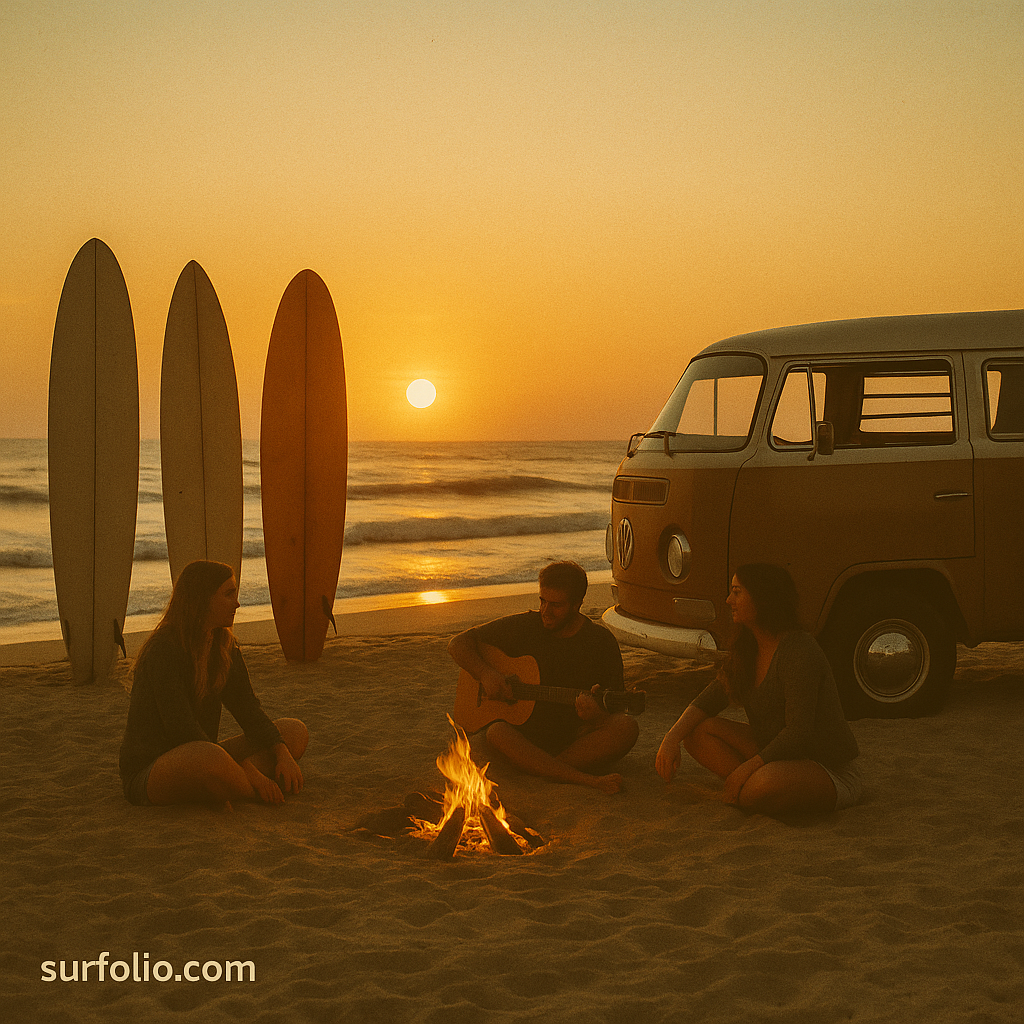
The Sound of the Waves
Before surf films and Instagram clips, the spirit of surfing spread through sound. In the early 1960s, surf music exploded across California — a soundtrack of sunshine, freedom, and saltwater dreams.
Its reverb-soaked guitars and carefree lyrics captured what surfing felt like: open roads, ocean horizons, and endless summer energy.
Surf music didn’t just accompany the sport — it helped build surf culture itself.
The Birth of Surf Rock
The genre began in Southern California with bands like The Bel-Airs and Dick Dale & The Del-Tones. Dale, known as the King of Surf Guitar, pioneered the powerful reverb and rapid picking that mimicked the sound and motion of waves.
His 1962 hit “Misirlou” became an anthem — fast, electric, and alive with the pulse of the ocean.
“I wanted my guitar to sound like waves crashing — endless, powerful, moving,” Dale once said.
That energy spread quickly up and down the coast, echoing through beach towns from Huntington to Malibu.
The Beach Boys Era: Surfing Goes Mainstream
While surf rock defined the instrumental sound, The Beach Boys gave it a voice — turning surf lifestyle into a pop phenomenon.
With hits like “Surfin’ Safari,” “Surfin’ U.S.A.,” and “Catch a Wave,” they transformed local California surf culture into an American dream of youth, sun, and simplicity.
Their harmonies made surf life feel accessible to everyone, even those who had never seen the ocean. Suddenly, surfboards, convertibles, and beach bonfires were symbols of freedom — all set to the rhythm of a wave.
Beyond the Coast: Surf Music Goes Global
By the mid-1960s, surf music had spread far beyond California.
In Australia, Britain, and Japan, young musicians picked up guitars and waxed their boards. The surf lifestyle — easygoing, adventurous, and free — became a global identity.
Even when the original craze faded, the influence stayed alive. From punk surf revival bands like Agent Orange in the ’80s to modern indie surf rock groups like Allah-Las and Best Coast, the vibe lived on — mellow, nostalgic, and sun-drenched.
The Surf Film Connection
Surf films of the 1960s and ’70s used music as emotional storytelling — none more iconic than The Endless Summer (1966).
Bruce Brown’s masterpiece paired dreamy narration with gentle guitar melodies, creating the ultimate surf fantasy: two friends traveling the world in search of perfect waves.
That combination of image and sound shaped how surfers — and non-surfers alike — experienced the culture: music as the heartbeat of surf adventure.
Modern Surf Sound: A New Generation
Today, surf music isn’t about one style — it’s a mood.
Artists blend surf rock with indie, reggae, lo-fi, and even electronic influences to create the modern sound of the ocean.
You’ll hear it in:
- Jack Johnson’s acoustic coastal flow.
- Donavon Frankenreiter’s folk-surf soul.
- ODESZA’s ambient beach beats in modern surf films.
Whether mellow or electric, today’s surf music keeps the same DNA: freedom, flow, and connection to nature.
The Cultural Ripple Effect
Surf music shaped more than just sound — it shaped attitude.
It gave rise to beach fashion, coastal slang, and a sense of carefree rebellion.
Flip-flops, sun-bleached hair, and VW vans became cultural symbols tied to the rhythm of surf tunes. The beach wasn’t just a place — it was a way of life.
Famous Surf Music Tracks to Revisit
- “Misirlou” – Dick Dale & The Del-Tones
- “Pipeline” – The Chantays
- “Wipe Out” – The Surfaris
- “Surfin’ U.S.A.” – The Beach Boys
- “Ride the Wild Surf” – Jan & Dean
- “Only the Ocean” – Jack Johnson
Each one captures a moment in surfing’s sonic evolution.
Final Thoughts
Surf music gave surfing its voice — upbeat, bold, and endlessly optimistic. It turned the beach into a cultural icon and surfing into a global movement.
Even decades later, that sound still echoes wherever the waves break.
Surfing is rhythm — and surf music is its heartbeat.
